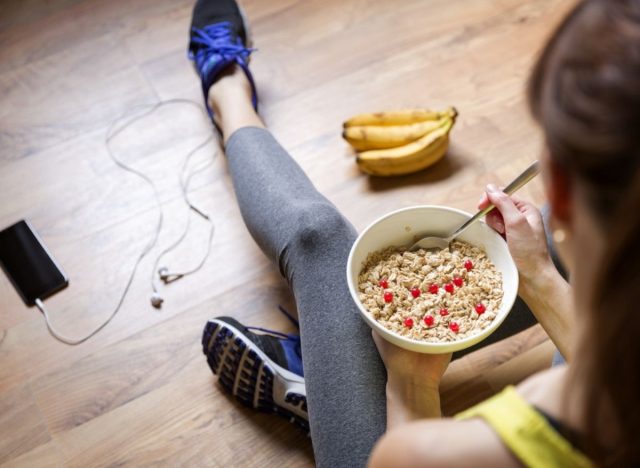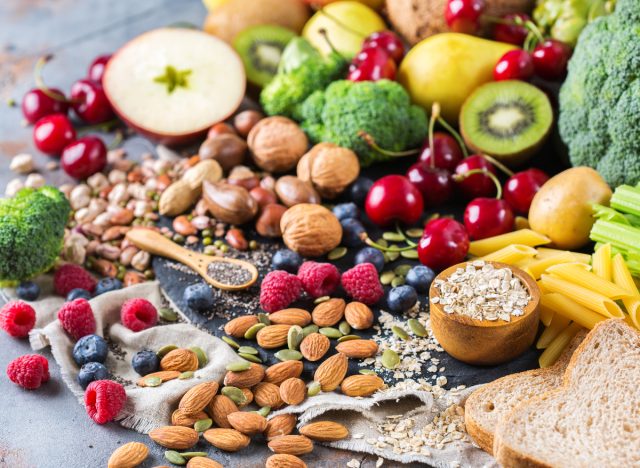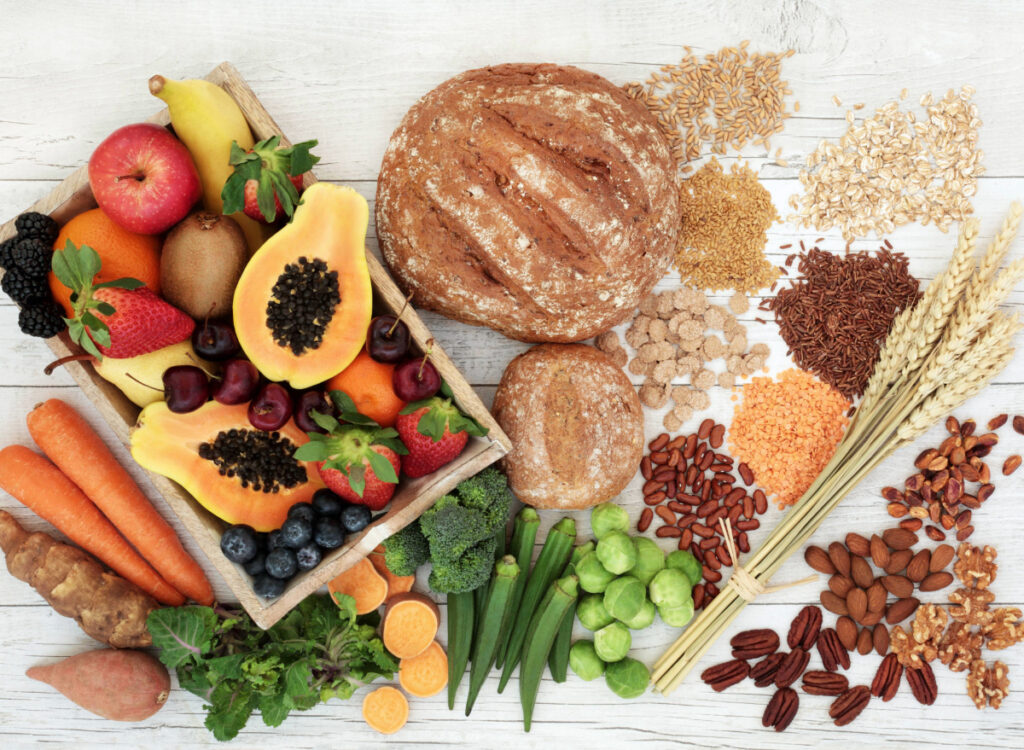[ad_1]
In the quest for effective weight loss, you may often find yourself navigating a sea of conflicting intel. This leads you to question the credibility of the information available. Should you cut out carbohydrates entirely, embrace high-intensity workouts, or opt for intermittent fasting? The constant barrage of contradictory messages can create a sense of frustration and overwhelm, making it challenging to establish an effective and sustainable path forward. To help you out in this pursuit, we sought out expert advice from Chelsea LeBlanc, RDN, who reveals exactly how much fiber to eat every day for weight loss.
“When it comes to weight loss, everyone talks about protein, but [they] often forget about one of the key nutrition superstars: fiber,” LeBlanc tells us. According to LeBlanc, the key to shedding unwanted pounds may be the simple act of incorporating the right amount of fiber into your daily meals. But before you start picturing bland bowls of bran flakes, let’s break down the science behind it in a way that’s not only easy to understand but also practical for your everyday life.
In this article, we’ll delve into the nitty-gritty of fiber’s impact on weight loss, exploring how much fiber you need to eat every day, along with discussing the types of foods that are rich in this essential nutrient and providing practical tips on how to easily incorporate them into your diet. Say goodbye to crash diets and hello to sustainable, science-backed strategies for shedding those extra pounds. It’s time to embrace the power of fiber in a way that not only benefits your waistline but also fits seamlessly into your lifestyle.
Read on to learn more, and when you’re done getting your fill of fiber, be sure to check out The #1 Most Effective Exercise for Weight Loss.
Fiber’s role in weight loss:

Why is consuming fiber beneficial for weight loss? The real reason is because of its ability to increase satiety. This quality not only curbs overeating but also aids in weight management by reducing overall calorie intake.
“Fiber is the unsung hero that keeps you feeling satisfied and full after meals,” LeBlanc explains. “This can assist with those weight-loss goals by helping you eat less and might even help you ditch those chip and candy cravings.”
Moreover, fiber serves as a metabolic ally, regulating blood sugar levels and supporting a steady release of energy. By slowing down the absorption of nutrients, it prevents rapid spikes and crashes in blood sugar, contributing to a more stable metabolism.
How much fiber should you eat every day for weight loss?

Determining the right amount of fiber for your daily intake is like finding the perfect balance for your body’s well-being. Ideally, recommendations suggest women should aim for 25 grams of fiber per day, while men need around 38 grams per day. However, think of it more as a general guide than a strict rule. It’s not about counting every fiber gram meticulously; instead, it’s about incorporating fiber-rich foods into your meals and snacks. Picture your plate as a colorful canvas filled with fruits, veggies, whole grains, and legumes—these are your fiber superheroes.
Gradually increasing your fiber intake can be a gentle and effective approach, ensuring your digestive system stays happy and you feel fuller for longer. Remember—it’s not about a drastic overhaul; it’s about weaving fiber-rich choices into your daily eating routine for a sustainable and tasty way to support your overall health.
Tips for incorporating fiber into a weight-loss diet:

The good news is incorporating fiber into your diet doesn’t have to be complicated. For example, incorporate nutritious plant foods to reach your fiber and weight management goals. A good option can be fresh avocados, as 79% of their weight is fiber and water. Fiber slows the speed of digestion, which makes you feel full and may help you eat less and stay satisfied longer. Just one-third of an avocado contains almost 5 grams of dietary fiber, and it can be incorporated into any meal like avocado toast or avocado-topped chili, thrown into a smoothie, or even made into baked goods.
Need some other tips? Choose whole-grain options for breakfast, such as whole-wheat toast, oatmeal, or whole-grain cereal, to kickstart your fiber intake early. Keep a variety of fresh fruits and vegetables readily available for snacks. Grab an apple, carrot sticks, or a handful of berries to satisfy your hunger with a fiber-packed treat. Add a variety of vegetables, beans, and legumes to your salads for an extra dose of fiber. Additionally, almonds, chia seeds, and flaxseeds are excellent sources of fiber. Sprinkle them on yogurt, add them to smoothies, or enjoy them as a standalone snack.
The side effects of eating too much fiber:

While fiber is a crucial component of a healthy diet, consuming excessive amounts can lead to a few unwelcome side effects. Overindulging in fiber—especially when introducing it abruptly into your diet—may result in bloating, gas, and abdominal discomfort. This is because the gut bacteria need time to adjust to increased fiber intake.
To keep things comfortable, introduce fiber gradually into your meals, and make sure to sip plenty of water. This gives your stomach a chance to get used to its new, fiber-rich friend. So, take it easy, add a bit more fiber to your plate over time, and let your body adjust at its own pace for a happier and healthier digestion.
[ad_2]
Source link



